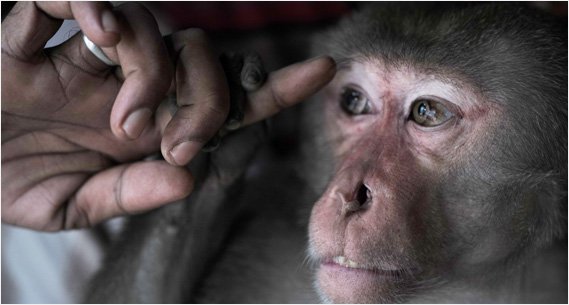Global efforts to eradicate yaws may require treating pet monkeys
Click Here to Manage Email Alerts
As WHO increases efforts to combat the endemic tropical disease yaws, which has resurged over the past 2 decades, researchers suggested that a One Health approach involving surveillance and treatment of infected pet monkeys may be needed to eradicate the disease.
“Although the agent of yaws is spread among humans via direct contact, research has shown that nonhuman primates (NHPs) may serve as mammalian host reservoirs with the potential for zoonotic transmission,” Lisa Jones-Engel, PhD, assistant professor of anthropology at the University of Washington, and colleagues wrote in Emerging Infectious Diseases. “Successful eradication campaigns depend on there being no reservoir shielding the agent from eradication efforts; thus, the role that NHPs play in yaws among humans must be determined.”

Yaws is caused by an infection with Treponema pallidum, which has been found in certain NHPs in Africa and Asia, according to a press release. The disease results in disfiguring skin lesions and bone destruction, but it can be treated with a one-time dose of penicillin or azithromycin. Yaws is spread in areas that are overcrowded or have limited resources and inadequate sanitation. During campaign efforts from 1952 to 1964, WHO and UNICEF treated 50 million cases and contacts in 46 countries. Subsequently, the disease appeared to be contained; however, it gradually re-emerged at the end of the 1970s, the release said. WHO estimates that there are currently tens of thousands of cases in Africa and Asia, and the organization has launched a second yaws eradication campaign.
To clarify the potential role of NHPs in T. pallidum transmission, the researchers screened samples obtained from 734 free-ranging and captive macaques between 1999 and 2012 in Southeast Asia, where there is a high prevalence of yaws in humans. Of the samples, 1.5% (n = 11) tested positive, including one sample from Singapore, two from Bali, Indonesia and eight from Sulawesi, Indonesia. The researchers noted that all of the positive samples collected from macaques in Sulawesi were pets from South Sulawesi and West Sulawesi Provinces, which are located on the island’s southwestern peninsula.
“Our findings show that pet macaques in Southeast Asia can be infected with Treponema spp. related to those that infect humans,” the researchers wrote. “The overall prevalence of infection was low in our survey, but the pocket of infection detected among pets in Sulawesi’s southwestern peninsula is noteworthy.”
Although the study did not investigate the treponemal serologic status of pet owners, the researchers suggested that the seropositivity of NHPs and high number of human cases in the region indicate that the bacteria may have been transmitted from pets to humans. They concluded that their findings, along with other published data, should encourage a One Health approach to eradication and surveillance activities.
“If you go into a village where you know yaws is prevalent in the human population, and animals are part of that population, then those animals may need to be targeted for treatment,” Jones-Engel said in the release. “We tend not to think of animals in these kinds of disease-treatment programs, which is such a human-centric approach. That has to change.” – by Stephanie Viguers
Disclosure: Infectious Disease News was unable to confirm relevant financial disclosures at the time of publication.
